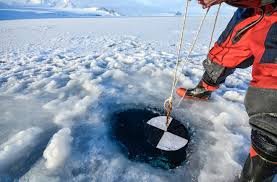Photo Credit ( Freepik )
The successful extraction of what is thought to be the oldest ice in the world by a multinational team of scientists in the Antarctic marks a significant turning point in climate research.
They reached the actual bedrock beneath the Antarctic ice sheet by drilling down over two miles to extract 2.8 kilometres of ice core.
“Like tiny time capsules of Earth’s atmospheric past,” the trapped air bubbles are contained within the ice. The samples could help unravel the secrets of glacial climate cycles since they represent an uninterrupted record of climate history going back 1.2 million years.
This was the fourth Antarctic field trip for the Europeans working on the European Commission-funded “Beyond EPICA – Oldest Ice” project.
Working at an elevation of 3,200 meters above sea level, with an average summer temperature of -35°C, they successfully completed more than 200 days of drilling and ice core processing activities over four seasons in the hostile environment of the central Antarctic plateau.
Unprecedented insights into the Mid-Pleistocene Transition—a remarkable time between 900,000 and 1.2 million years ago when glacial cycles slowed down from 41,000-year intervals to 100,000-year intervals—will be provided by the Beyond EPICA ice core.
This initiative aims to solve one of the long-standing mysteries of climate science: the causes of this change.
Using SWNS to gather and categorise Antarctic ice core samples (PNRA/IPEV)
Carlo Barbante, Coordinator of Beyond EPICA and professor at Ca’ Foscari University of Venice, who is a member of the Institute of Polar Sciences of the National Research Council of Italy (Cnr-Isp), stated, “We have marked a historic moment for climate and environmental science.”
“This ice core provides the longest continuous record of our past climate and can show the relationship between our planet’s temperature and the carbon cycle.”
The team hypothesised that the base of the core might contain much older ice, which dates back 2.58 million years.




